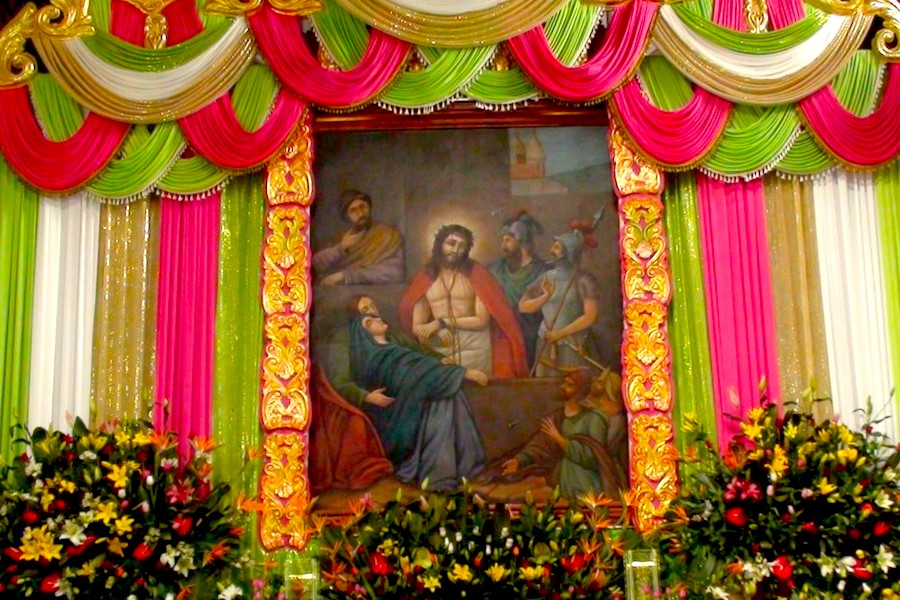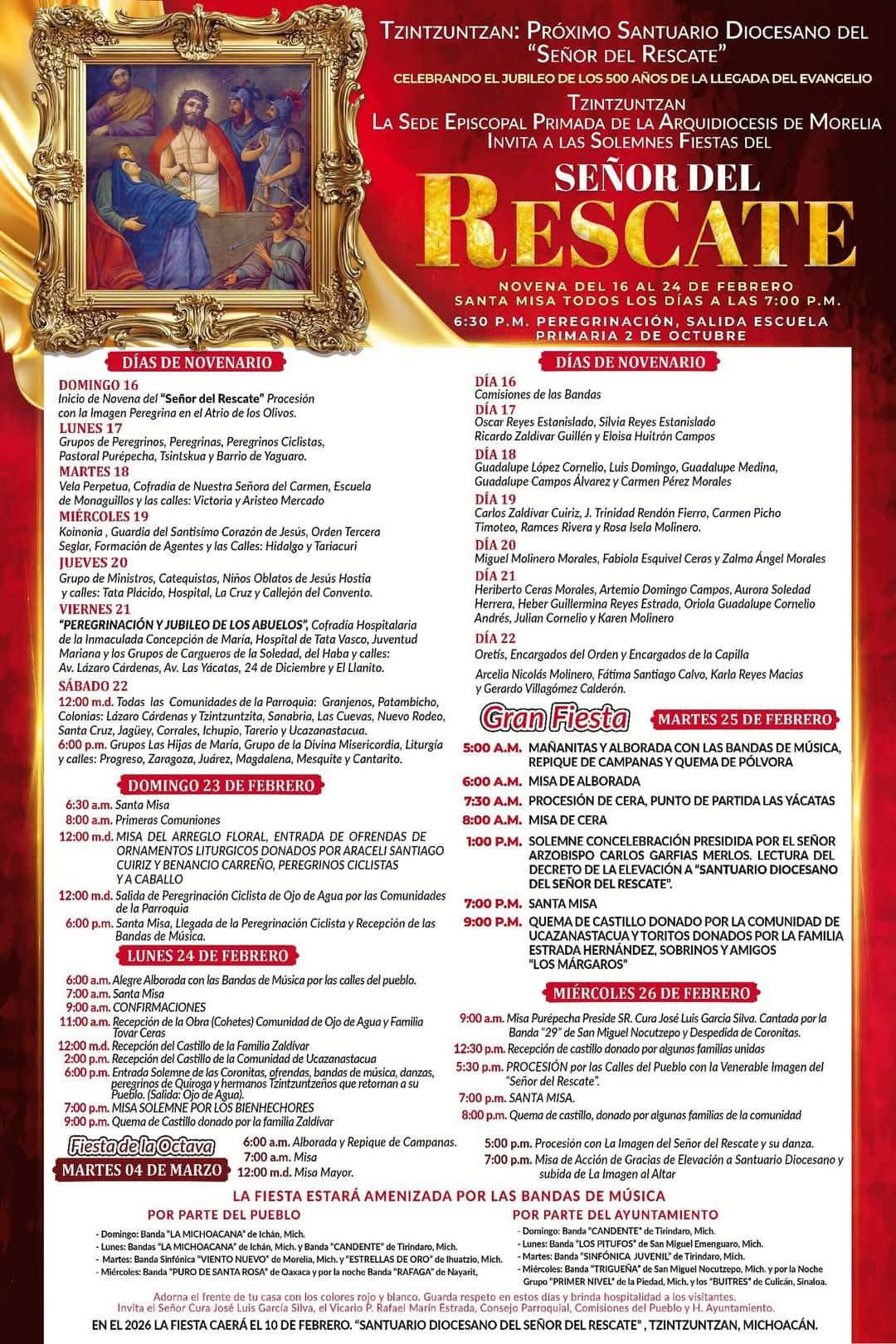
Adress
Tzintzuntzan, Michoacán, México.
GPS
19.626131845984, -101.5786242485
KNOW MORE PLACES
VISITA OTRAS LOCALIDADES
Celebration instituted by Don Vasco de Quiroga. Pilgrimage, procession, bands, dances, sporting events, popular fair and presentation of the dance of the Lord of the Rescue.
It is said that the image of the Lord of Rescue, venerated in the temple of the former Franciscan convent of Santa Ana, freed the town in the 18th century from the smallpox plague.
La historia señala que fue en el siglo XVIII cuando en esta región azotó la temible peste de la viruela en la cual se perdieron muchas vidas y era tanta la preocupación de la gente de la localidad que un guardián del convento franciscano acudió a los pies del cuadro que ya se encontraba dentro del convento franciscano y suplicó ayudase a todos los habitantes de este municipio infectados por este terrible enfermedad exclamando: “¡Padre mío santísimo, rescátanos del poder de la muerte, por esa tu sangre derramada!”.
Then the miracle happened and the plague moved away from the indigenous communities. Days later the plague disappeared completely, leaving the people completely grateful to the Blessed Image, which since then occupies a special place in the Temple of San Francisco de Asís.
The image of the Lord of the Rescue is an oil painting from the 16th century, from the Colonial Art collection located within the former Franciscan Convent of Santa Ana. It is a presentation of the Nazarene learned by the soldiers and on one side the mother suffering martyrdom upon seeing her son.
The Señor del Rescate festival in Tzintzuntzan is one of the most traditional festivities in Michoacán and takes place every year eight days before Carnival Tuesday. It brings together thousands of people who come from all over the region and the state, either on foot, on bicycle pilgrimages, or by vehicle.
- The dawn mass at 6 in the morning
- Confirmation and first communion ceremonies at 11 a.m.
- a concelebración eucarística al mediodía
- Mass at 7pm, followed by the burning of castles and bulls
- The walk from Pátzcuaro to Tzintzuntzan, where you can see families and groups of friends walking along the road and trails
- The presence of orchestras in the Atrium of Los Olivos, which liven up the party with sones, abajeños, waltzes and other types of music
*2026: 10 de febrero

